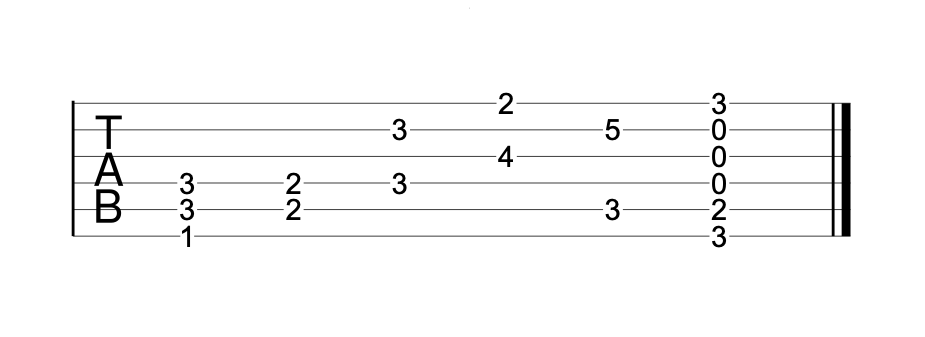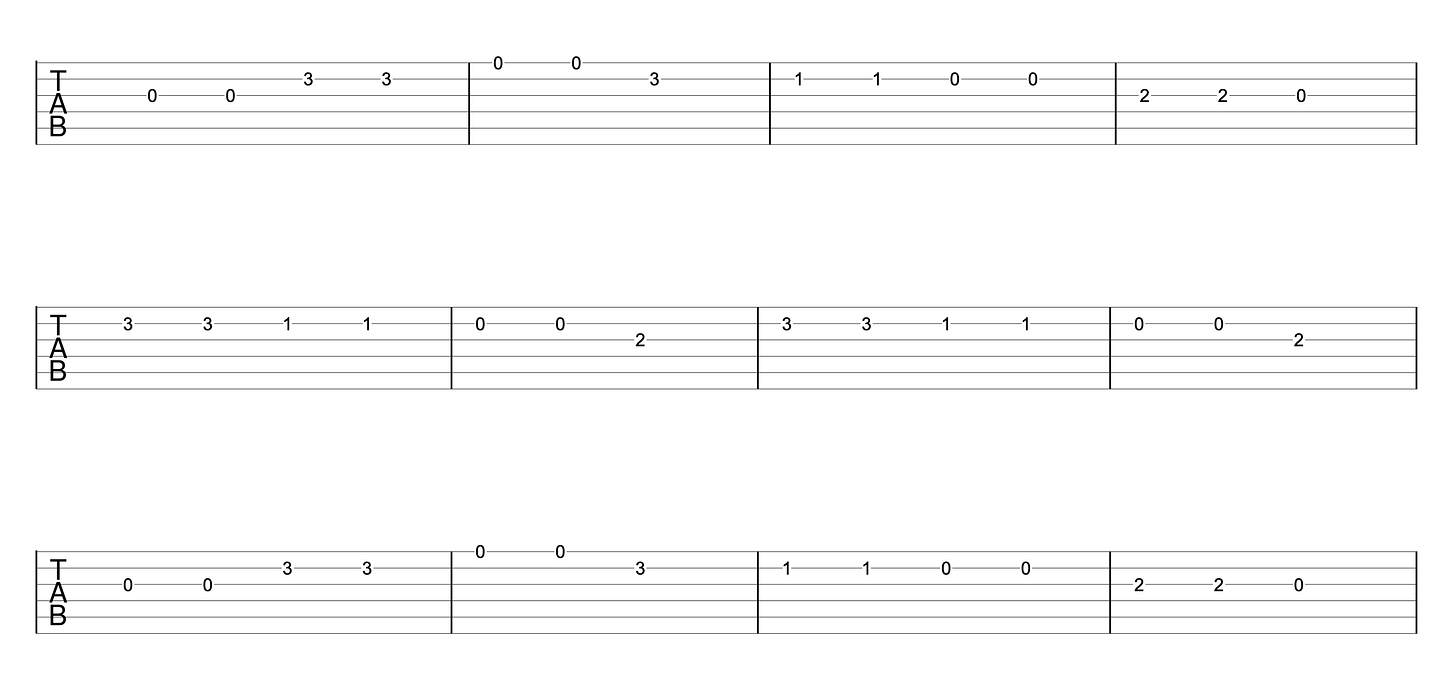An Absolute Beginners Guide to Tabs
Introduction
If you thumb through any guitar periodical, or educational content, you’ll almost surely see pages filled with lines and numbers. To anyone unfamiliar with the guitar this might appear a little mystifying and as useful as flatpack assembly instructions written in Latin. Though for the initiated, it reflects a primary commodity—a representational system encoding a universe of musical ideas, theory, and knowledge.
This system, which is called tablature, is the primary mode used by guitarists to transmit information. Just like any system, tabs, as they’re commonly referred to, are built using conventions, rules, and symbols—a musical hieroglyph containing essential elements for every guitarists. For any beginner, tablature is a system that needs to be understood. Even if you do know how to read standard notation, much of what is communicated in the guitar world comes through tabs, so becoming familiar with tabs is essential.
If you are a beginner guitarist who has never seen, let alone heard of tablature, then this is for you. I’ll step through the absolute basics of guitar tablature, what the system looks like, and how to decode it.
What is tablature?
Tablature is a notational system used by guitarists to indicate where a finger needs to be positioned on the fretboard. It provides the location of a specific note, or collection of notes, to be played. This differs from standard notation where the pitch of a note is indicated using a musical staff.
As a system, tablature isn’t actually unique to the guitar—in fact, tablature was in use for centuries for various instruments, and actually predates standard notation! Each instrument had their own conventions and rules for writing notes, and the guitar was no different. Though despite some conventions shifting over the centuries, the basic purpose has remained unchanged, and our modern system has retained many features of its historical predecessors.
The Strings
If you’re familiar with standard notation, you’ll know it uses five horizontal lines (and the spaces between) to show pitch. Guitar tablature looks similar, but the lines represent strings, not notes. The number of lines matches the number of strings on your instrument. So, a bass guitar tab has four lines; a six-string guitar tab has six.
By convention, the strings are arranged from highest to lowest pitch, top to bottom. That means the top line represents your first string—the thinnest and highest pitched—and the bottom line is your sixth string—the thickest and lowest. This might feel a bit counterintuitive at first, so take a moment to get used to it. Try laying your guitar flat on your lap and looking down at the fretboard—you’ll notice the strings line up with the layout of the tab. A guitar tab is like a birds eye view of your fretboard.
Note Location
We number the frets starting from the one closest to the nut—fret one. Technically, any sequence could work, but we all had a meeting and agreed one was a solid place to begin. So, fret one is right next to the nut, fret two comes after that, and so on. In tablature, numbers are placed on each line to show which fret to play on which string. This system works like a coordinate grid: strings run North-South, and frets run East-West. Using this, you can pinpoint exactly where to place your fingers, just like finding a location on a map. Have a look at the example below and find each note on your guitar.
Starting from the bottom line (your thickest string) and working your way up, you have the following coordinates:
6th string, 1st fret
5th string, 2nd fret
4th string, 3rd fret
3rd string, 4th fret
2nd string, 5th fret
1st string, 6th fret
But what about open strings? You might have already guessed, but zero is used to indicate an open string. For example, the example below shows how all the open guitar strings appear in tablature.
Stacking Notes
Guitar tabs don’t just show single notes—they can also represent intervals1 and full chords. In earlier examples, the numbers were written one after another, meaning the notes should be played in sequence. But when numbers are stacked vertically, it means those notes are played at the same time.
Take a look at the example below: the chord on the left is an F power chord, while the one on the right is an open G major chord. Everything in between shows intervals of different sizes. You don’t need to know exactly what those intervals are—the point is to show how chords and intervals appear in tab form. The same rules still apply: fret numbers and string positions tell you exactly where to place your fingers.

Give it a try!
There’s no better way to learn than by doing, so I’ve included a simple tune for you to figure out on your own. Take your time working through the tab, playing each note in sequence. As you go, listen closely—you’ll start to hear the melody take shape.
Once it sounds familiar, try playing it without looking, and focus on matching the rhythm and feel of the tune. Don’t worry about getting it perfect—what matters most is developing your ear and confidence.
Stick with it, enjoy the process, and most importantly—have fun!
~R
Thanks for hanging out at String Theory Guitar Studio. It means a lot that you’re here. All the content available here on Substack is free, but if you’re feeling generous and want to support the work I do, hit the button below to buy me a coffee.
An interval is simply the distance between two notes. It can be small, like two notes right next to each other, or larger, like notes that are several frets apart. Intervals are the building blocks of chords and melodies.




